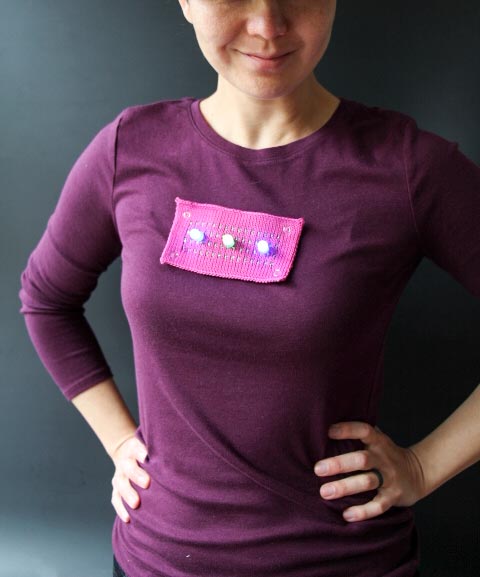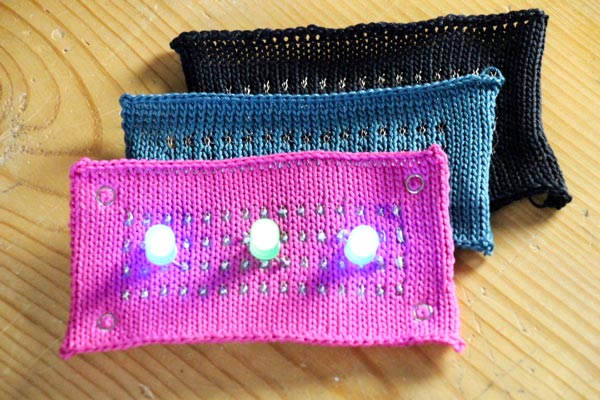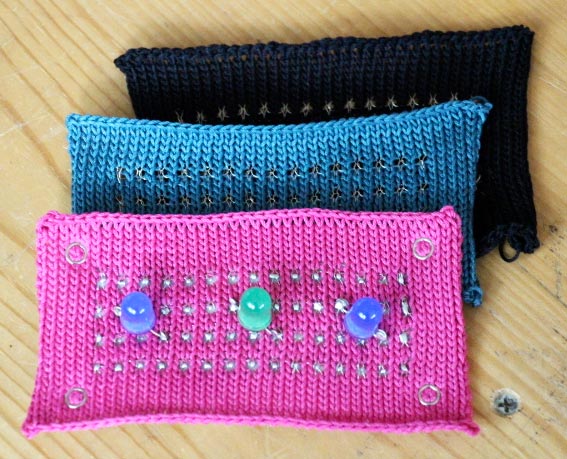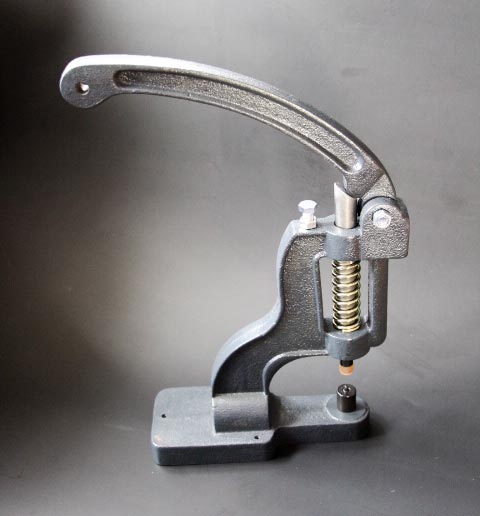
Circuit Patches are wearable circuit boards made from knitted yarn and wire. I'm doing a workshop Sunday using these. Check it out!
I use a knitting machine to make the patches, and add snap buttons with a snap press. Now the circuits can be attached to anything-- no sewing required.
Rapid prototyping for Wearables!


I made these circuit patches for my upcoming workshop. Participants will receive a 3" x 5.5" knitted proto-boards in black, pink, or teal. Solder LEDs and a battery on it, and you can add lights to your clothes, just in time for Halloween.
Of
course, there's lots of things beyond LEDs you could add, and I'm hoping
to do workshops for interactive circuits using knitted protoboards soon.
I've made a number of circuits with this method so far, usually in black. For this workshop, we're adding some fun color: circuit-board-teal and... pink! I couldn't resist adding 10mm gumdrop LEDs to the pink protoboard pictured above.
We'll have some of those jumbo LEDs for the workshop, but also smaller ones in blue, yellow, red, white. I've even got some color-change and flicker LEDs.
If you'd like to participate, please RSVP. Hope to see you Sunday! (Bring a shirt or a hat or a bag so you can add snaps to mount your circuit on it.)

My new favorite machine: the snap press applies snap buttons without sewing.




























